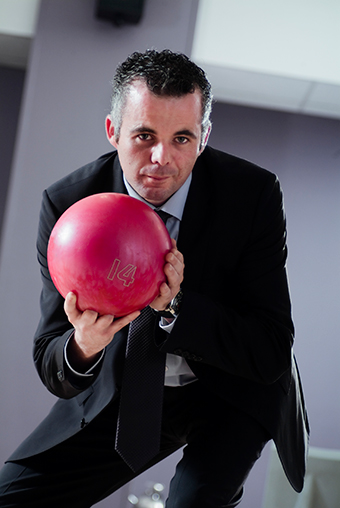What Managers Can Learn from Team Sports
Imagine that you work in a manufacturing facility where your job is to prepare Persian vases for packaging. The vases come down a conveyor belt in groups of 10, each vase in a box, standing upright. Your job is to lay the boxes on their sides before they go on to be automatically shrink-wrapped and placed on pallets for shipping. The vases come by quickly, so doing the job efficiently requires some skill. Your productivity is nothing to write home about but you do enough to stay out of trouble. You’ve had this job for several years, and although you consider the pay to be good, you don’t particularly like the work and often complain of boredom and a lack of challenge.
 Your performance is reviewed in quarterly appraisals. The sessions are predictable unless a problem arises; but in any event, the reviews are not particularly satisfying. If performance is below standard, your supervisor asks, “What are you going to do about it?” When performance is above average, your supervisor states, “That is what you are paid to do.”
Your performance is reviewed in quarterly appraisals. The sessions are predictable unless a problem arises; but in any event, the reviews are not particularly satisfying. If performance is below standard, your supervisor asks, “What are you going to do about it?” When performance is above average, your supervisor states, “That is what you are paid to do.”
You receive very little feedback during the course of your shift. If a problem occurs, the boss assembles the group and talks about the need for higher performance or improved quality. He may even mention the consequences of failing to improve. But most of the time, one day is pretty much like the next.
Now let’s consider another task in a different setting that is very similar to Task 1 (the vase-packaging task), but one which the performers look forward to doing and always enjoy immensely. Let’s call it Task 2. These employees also have to put 10 objects at a time on their sides. Task 2 is more difficult than Task 1 because in Task 2 the objects are 60 feet away. The employees use a special tool to accomplish this task. The ideal job per-formance is to complete the task on the first attempt, but if they don’t do so, they get a second chance. If they fail on the second try, an automatic device removes any remaining objects and the performer gets no credit for those remaining. The machine then sets 10 more objects up and the task is repeated. In spite of the potential pressure to put all the objects on their sides in only two attempts, the performers do not feel stressed. Instead, they really enjoy the task and over a period of time become quite proficient at it.
Why is Task 2 so much more productive and more enjoyable than Task 1?
While engaging in Task 2 each group of performers is organized into a team and each team picks a name. The performers record the results of each trial on a form. They also keep a running total of their daily performance. Interestingly, performers don’t complain about the paperwork involved in tracking their performance. Totals for the entire group are publicly posted so everyone can see how the group is doing. They like this and would hate to perform in a setting where they did not receive such timely performance feedback. In addition, their manager and team members come over from time to time to observe them and to look at the performance record. They don’t resent the fact that others look at their performance data because when they are doing well they pat each other on the back and laugh and joke. When one member of the group has a problem, he either asks for help or others offer help, on what they observe him doing wrong, and they give him advice on how to correct the problem. The manager also recognizes the group’s members with plaques, trophies, and patches to place on their shirts or jackets. He distributes such items frequently, usually on the day they are earned or at least by the next meeting.
 While engaging in Task 2 all the performers know exactly what they are expected to do and understand the standards for performance. They set group and individual goals based on their past performances. The individual goals differ for each person. The manager notices even small improvements and is quick to give praise. Since the performers know their improvement will be appreciated, the team continually sets higher goals. As a result, most people consistently improve until they reach a relatively high-and-steady level of performance.
While engaging in Task 2 all the performers know exactly what they are expected to do and understand the standards for performance. They set group and individual goals based on their past performances. The individual goals differ for each person. The manager notices even small improvements and is quick to give praise. Since the performers know their improvement will be appreciated, the team continually sets higher goals. As a result, most people consistently improve until they reach a relatively high-and-steady level of performance.
Task 2 has one unique attribute: people aren't paid to do it! Instead, they pay to do it. What is this task? Bowling. You might think that, of course, a sport is more fun than work! But just what is so enjoyable about bowling? All you do in bowling is take a 16-pound ball and roll it down a long alley toward 10 large pins, over and over and over again – a very repetitive task. Even so, millions of people bowl as often as they can. You may think that a sport is fun because of the activity itself. In fact, it is not what you do that determines whether you have fun; it is what happens to you when you do it. For example, how could we take the fun out of bowling?
First, we could give the bowlers a boss and a salary or wage. Then, we could make the bowlers take the game seriously. That is, we would demand that conversation and distracting activity be kept to a minimum. Idle talk and chatter would not only distract those who are bowling but would take the other bowlers’ minds off the game. Therefore, no loud talking, joking, or horseplay would be allowed during the game. Then, since bowlers are there to bowl, let’s not load them down with paperwork. Rather than have them keep their own score, we will keep score for them. Since we don’t want them hanging around the alley after the match is over to see their score, we will mail it to them. And again, to cut down on the cost of administration, we will send the scores out only once a month. That way we not only save on processing time and paperwork, but we also save on postage. When we send the reports, we will circle the poor or problem performances in red and write a comment on the report such as “What happened here?” or “See me about this!” We will never express satisfaction with the level of performance because we think if we do so, the bowlers will not do their best. To prevent the bowlers from slacking off, we will set high goals for everyone and use the best bowler’s performance to show the others what is possible. We will, of course, compare teams in the same way. If someone bowls above average, we will tell that person “That’s what you’re paid for!” and that no other consequences from management are necessary.
We will then rank the bowlers not only by score but also on such things as attitude and initiative. We will threaten the ones on the bottom with loss of team membership if their performance does not rise above average by the end of the next reporting period. This discouraging scenario could go on and on. No doubt you could think of some other things to take the fun out of the game so that we would eventually have to pay people a handsome wage to get them to participate. The critical point is that the important element for making work fun and maximizing production and efficiency is not the specific tasks required for the job, but the context in which the job is carried out.
If we can take a sport and make it something people don’t want to do, can we take work and make it something people want to do with the same energy and enthusiasm they typically put into sports? The answer is an unqualified YES! But to accomplish this, we must first identify the characteristics in sports that are most often absent at work.

Some characteristics of team sports are:
- Specific job responsibilities. In team or individual sports, the player's assignments are clearly defined. Even in sandlot games, players know their responsibilities.
- Measurable results. It’s difficult to think of sports without measurement. Imagine bowling, tennis, soccer, or golf without keeping score.
- Emphasis on behaviors. Nowhere are results more important than in sports, but in sports more than in business, it is common to praise the good swing, good form, or the good follow-through. The best coaches are those who applaud not only the good results but also all the right behaviors along the way.
- Teamwork. Individual assignments are well defined in team sports so it is easy to know when and how to help your teammates. Since individual success is affected by how well the team performs, team mem-bers help each other. If the team members can’t solve a problem, they seek advice from the coach.
- Challenging but attainable goals. Although the goal is to win, sub-goals are an exciting part of every game: getting a hit in baseball, making a first down in football, serving an ace in tennis, or landing within regulation on the golf green.
- Immediate feedback. In sports you know where you stand at all times. You can see your progress, or lack thereof, on every play, serve, volley, or time at bat. Not only do you know how well you are doing, you usually know what you need to do to improve.
- Positive reinforcement from peers, fans, and coaches. Positive reinforcement is the most prominent element in sports and the one that is usually missing at work. It is natural in sports to congratulate, applaud, pat on the back, cheer, and otherwise celebrate the accomplishments of teammates. Unfortunately, in many workplaces these things are considered unnatural and/or unnecessary.
Reprinted from the book Performance Management


